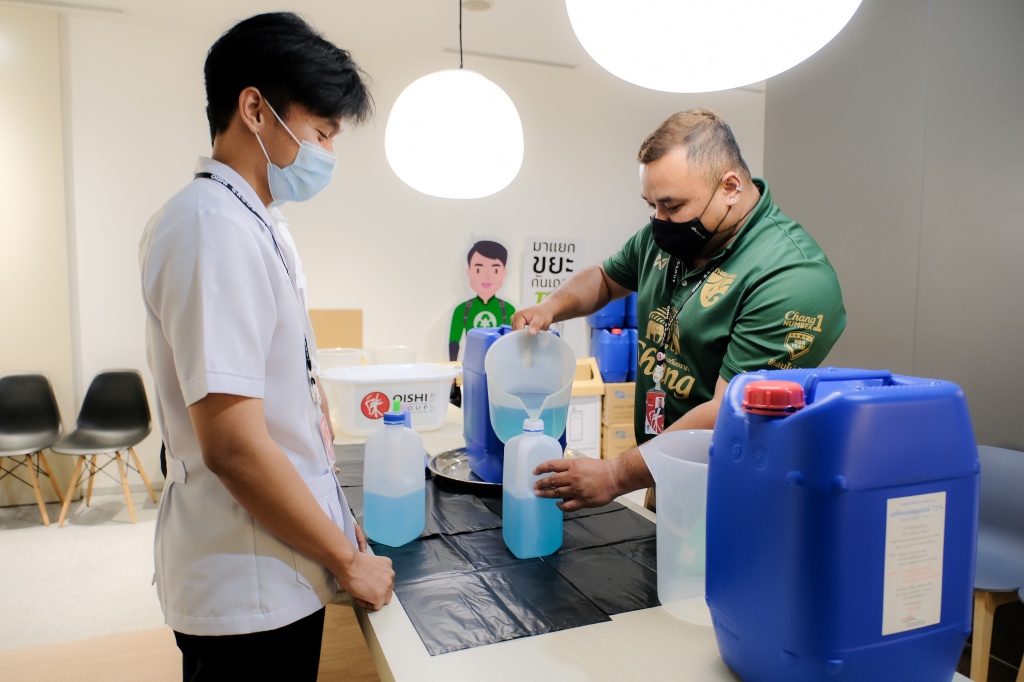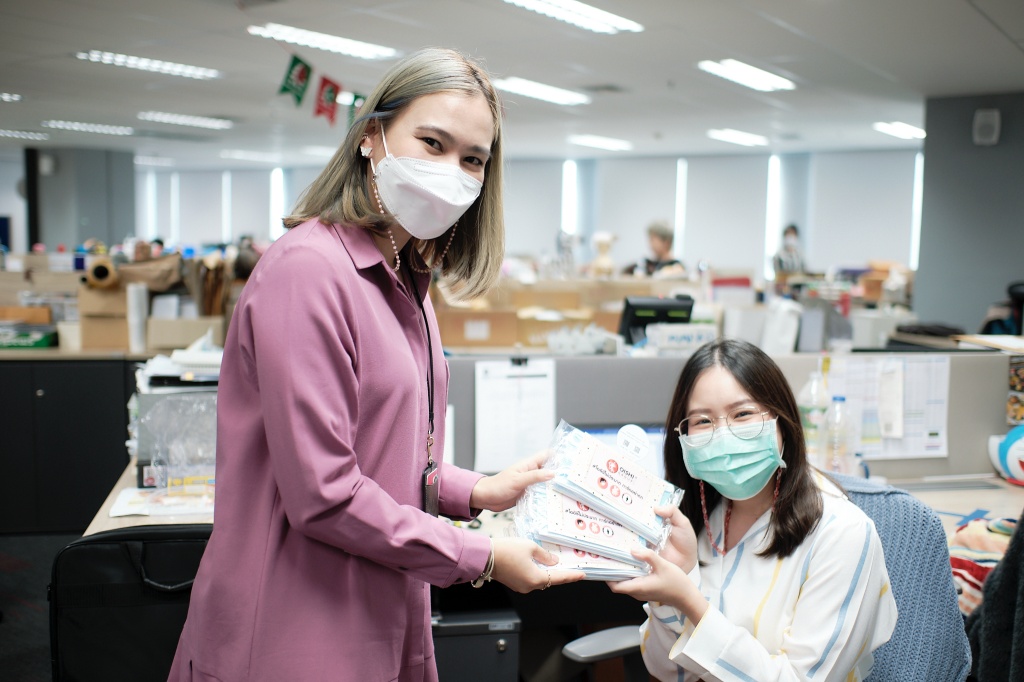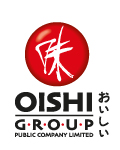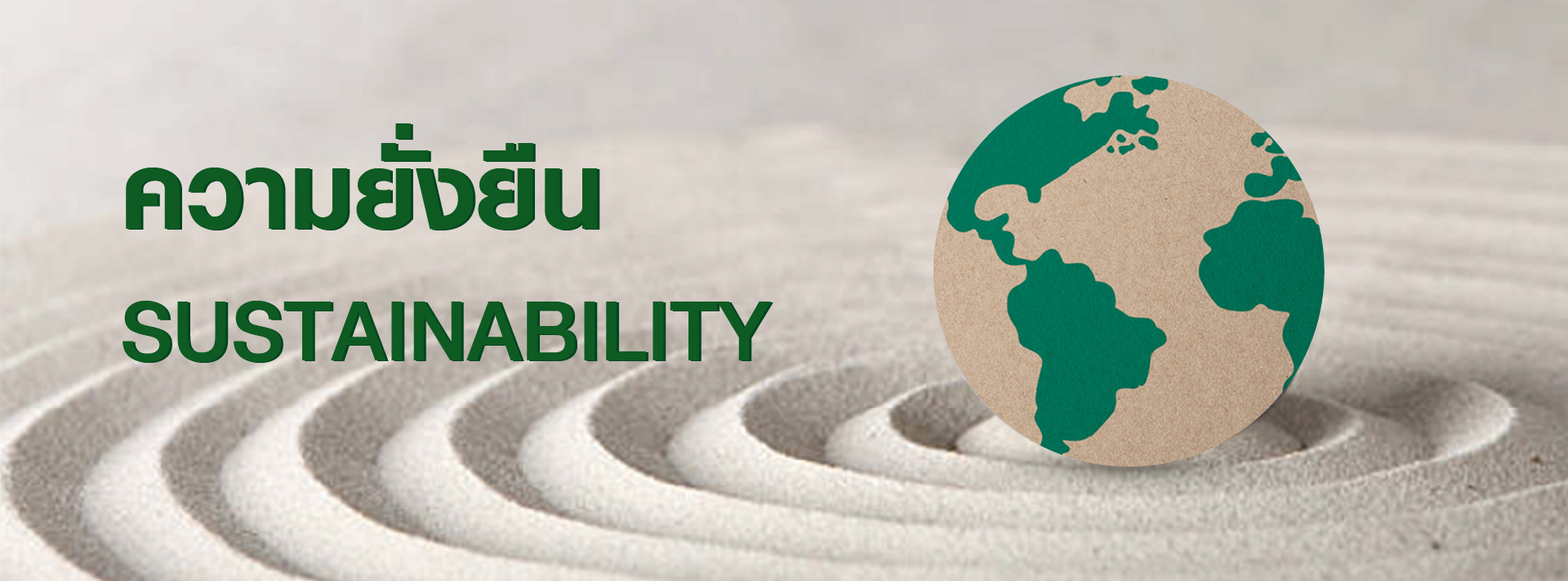Employee Wellbeing
Personnel are the main mechanism for driving the organization. OISHI places importance on and cares for the well-being of employees at all levels, especially in terms of safety. The company has set up a safety management system in accordance with laws and international standards for safety, occupational health, and working environment for employees. OISHI is ready to encourage the improvement of working environment to suit the situation and physical and mental conditions of employees for the quality of work life and good health of employees.
Caring for the well-being of employees
OISHI has established guidelines for safety, occupational health, and working environment to cover 4 areas as follows:
(1) Safety
OISHI establishes a safety management system with a strong focus on compliance with relevant safety laws and standards, to achieve the highest operational safety goals of ‘Zero Accident’ and ‘Zero Occupational Diseases’, and instill a sustainable safety culture with the following guidelines:
- Determine security policies to serve as a framework for operations.
- Clearly define the safety management structure by establishing the Occupational Health and Safety (OH&S) Department and appointing the Safety, Occupational Health and Working Environment Committee (CPO) as required by law, in order for all parties to participate and to drive the work of safety to be strong and sustainable.
- Prepare and request for the ISO 45001 Occupational Health and Safety Management System Certification to meet international standards and comply with the law, to achieve annual surveillance for continual improvement.
- There is an assessment of hazards and risks in the workplace covering every step and every working area, including a Safety Patrol by the Safety Committee to find hazards and risks that may cause harm and bring results of the inspection to make improvements for more safety.
- Encourage employees to participate in safety operations through activities such as writing a Near Miss Report, and implementing Safety Improvement Project.
- There is an analysis of the true cause of every accident in order to determine measures to prevent re-accidents, and extending to all factories with similar jobs or risks. In addition, modern machines and safety innovations have been used to reduce accident-risk and prevent occupational diseases.
- Raise safety awareness among employees by organizing various safety training courses, including training on working procedure standards, emphasizing employees to practice through learning from Safety DOJO and On Job Training (OJT).
-There is a system to prepare for various emergency situations, such as annual fire drills and evacuation drills as required by law. Other contingency drills according to the hazard and risk characteristics of the work area and risks that may occur due to disasters or natural calamities, etc.
- It is part of the Total Productive Maintenance (TPM) system to use the TPM techniques to improve the quality of life of employees to work safely, disease-free and happy.
(2) Occupational Health
For occupational health management, OISHI takes care of employees so that they have good health and hygiene under a good and safe working environment as follows:
- Provide a clean, safe and suitable working environment in accordance with legal requirements, both in the working area and the utility systems. This also includes having an infirmary with nurses on duty to provide primary care in case of injury or illness.
- In case the work area is dangerous and risky, OISHI has taken corrective action at the root cause. But if corrective action is taken, but there are still risks left. OISHI will provide employees with appropriate personal protective equipment.
- Examine the working environment according to its hazards and risks in order to comply with industrial hygiene and legal requirements, including light, noise, heat, and chemicals.
- There are annual health checks and health checks based on risk factors for employees according to hazards or various risk factors to ensure employees' health on a regular basis. This leaves no employees suffering from work-related illnesses. However, if it is found that employees have abnormal health examination results, they will be re-examined and sent for treatment by a doctor, as well as considering changing the nature of their work or improving the working environment/machines to be safer for them.
- There are health promotion activities with a focus on disease prevention for employees, for example, there are activities to encourage employees to exercise and provide proper vaccination against various diseases.
(3) Working Environment
OISHI takes care of the working environment, which is divided into 2 parts as follows:
• General Surrounding and Environment
- Prepare the workplace properly and provide employees with appropriate and standard tools, work equipment and office furniture.
- Provide hygienic and appropriate utilities for employees such as dining rooms, bathrooms, rest and smoking areas.
- Organize the scenery and environment within the organization to be pleasant and orderly as well as create a good working atmosphere. This in turn influences employees' feelings, inspires and drives effective results that lead to organizational success.
• Working Environment
- Provide a work environment so that employees can work safely and in an ergonomic way, reducing injuries and illnesses due to occupational diseases.
- There is a system to check the working area regularly (Monthly safety patrol). If it is found to be dangerous and at risk, the company will make improvements to reduce or eliminate such hazards. This results in maximum operator safety.
- Annually monitor and measure and follow up on improvements in case of non-compliance with the law or requirements. This is to strive for workers to have safety and good health at work.
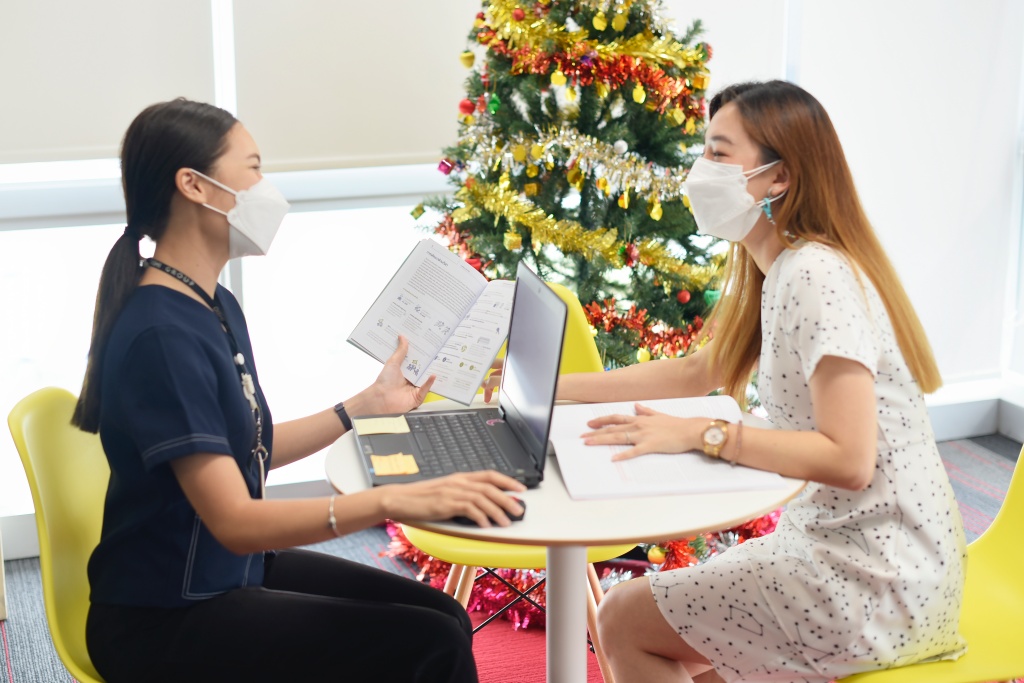
(4) Caring for employees in the epidemic situation of COVID-19
OISHI attaches great importance to the health, safety and well-being of its employees, especially during the COVID-19 pandemic, that affect the organization and all employees. OISHI therefore has measures to protect, care for, facilitate, and assist all employees.
- Manage work areas as appropriate, such as adjusting work seats according to social distancing principles by keeping a distance of 1.8 meters.
- Create a Work from Home policy for employees who can work through various online systems to reduce risks for employees and their families.
- Safety measures are required for employees in entering the workplace such as having a screening point for COVID-19, cleaning and disinfecting, installing alcohol gel in various areas, temperature checking, as well as various protective equipment that are required to enter the work area.
- Use digital technology to record time in - out of work instead of scanning with fingers to work in various places to reduce the risk of spreading the infection from touch.
- Provide additional benefits to employees, such as facilitating staff testing for COVID-19, vaccination, and hospitals supporting employees infected with COVID-19, as well as providing health insurance for COVID-19 to all employees.
- Distribute protective equipment such as masks and alcohol to employees and their families.
- Establish ThaiBev’s service center for employees during the COVID-19 period so that employees can call for information and get advice on how to cope with the COVID-19 situation, especially employees who are directly affected.
- Provide proactive testing for COVID-19 for OISHI factory employees on a regular basis, monthly in low epidemic areas and every two weeks in high epidemic areas.
- Establish ThaiBev's Isolation Center as a detention facility for vulnerable employees who are unable to isolate themselves at home. This prevents the spread of the virus from family members as well as prevents the spread of risk from employees to family members.
